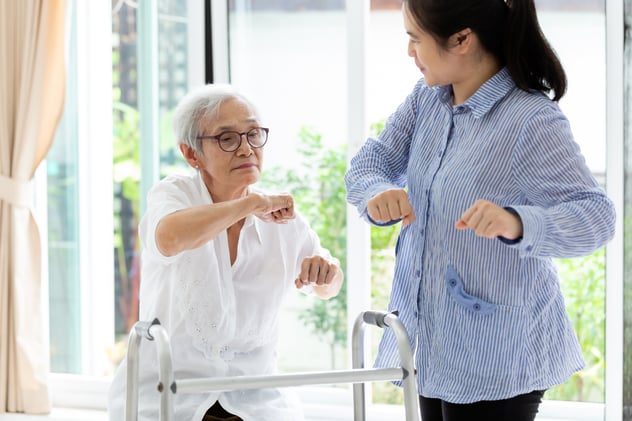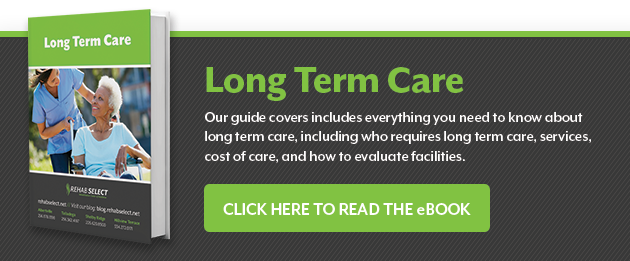
You might be surprised to know that neuromuscular rehabilitation therapy can benefit a variety of people and has proven effective for mitigating the effects of MS, Parkinson’s disease, and stroke. Neuromuscular therapy (NMT) helps counteract the impact of these conditions on your nerves and muscles.
If you have a neuromuscular disorder, NMT will likely make up a large part of your comprehensive treatment plan. NMT includes various physical, occupational, and speech therapies specific to neuromuscular disorders to help prime your body for the demands of daily life.
Overview of Neuromuscular Rehabilitation Therapy
Neuromuscular rehabilitation therapy looks different for each person based on their condition, goals, and abilities. Your physical and occupational therapists work in conjunction with your doctor and other providers to create a personalized action plan.
The main goal of NMT is to keep you as active and independent as possible. Your therapists dedicate their efforts to optimizing your physical capacity, whether that’s through building your muscles or training your reflexes.
Neuromuscular disorders affect nerves and muscles, which can lead to changes in how you walk, your balance, your control over voluntary movements, and much more. The role of NMT is to help you maintain as much function as possible.
Neuromuscular therapy also helps minimize the symptoms of neuromuscular disorders, including:
- Pain
- Dysfunctional gait or posture
- Nerve compression
- Decreased blood flow
- Muscle weakness
- Impaired breathing
The benefits of neuromuscular therapy often include better motor control, less pain, slowed disease progression, and improved quality of life. Therapy can really make a difference, so it’s important to follow the recommendations of your medical team.
Neuromuscular Rehabilitation Techniques
Each therapist uses a variety of techniques to help restore your autonomy. The providers you’ll likely spend the most time with include your physical therapist, occupational therapist, and speech-language pathologist.
Physical Therapy
A physical therapist uses physical exercises and manual therapies specific to your condition to help you move and perform better. They can also teach you how to use adaptive devices for tasks that you need extra assistance with.
Stretching
Tight hip flexors, shoulders, and other joints can create limitations with walking, lifting, and many everyday activities. If you have a neuromuscular disorder, stretching can help relieve tightness and improve your flexibility so that you have better range of motion through your joints.
Strength training
Muscle weakness is a common side effect of neuromuscular disorders. Resistance exercise helps counteract weakness. Your physical therapist may have you perform targeted exercises with equipment like weights, bands, or body weight to help increase your functional strength.
Mobility training
Mobility refers to your ability to move your muscles and joints in their full range of motion. Many strength and flexibility exercises have mobility built into them, but your physical therapist may focus on specific mobility-building moves.
Balance training
Many nerves and muscles are involved in maintaining balance and stability, so damage to the neuromuscular system can impair balance. Your physical therapist may have you perform exercises to progressively improve balance. They may also have you practice common movements such as sitting to standing to build muscle memory and reduce fall risk.
Gait training
Conditions like MS and Parkinson’s can cause muscle weakness, spasms, and slowed movements that change your stride. If your condition affects the way you walk, gait training helps improve the range of motion and coordination required to walk normal again. Your physical therapist can also set you up with a cane or walker if you might benefit from extra support.
Neuromuscular electrical stimulation
Your physical therapist may use a device to send painless electrical impulses between muscles and nerves, causing the muscle to contract. Neuromuscular electrical stimulation can help retrain nerve signals and improve motor function.
Occupational Therapy
An occupational therapist helps restore movement and coordination specific to your job, interests, and daily life. They can help train you with the skills required for tasks like cooking, cleaning, bathing, dressing, and other productive activities.
Gross motor training
Gross motor training involves the large movements required for everyday activities. Your therapist can help prepare you for tasks like climbing stairs or transferring from a wheelchair to bed with specific training. Therapy can also help you make modifications and provide devices to make these tasks more manageable.
Fine motor and dexterity training
Your occupational therapist helps you fine-tune the precise movements needed to complete regular tasks. Examples of the types of exercises you might see are customized hand exercises to make buttoning clothes easier or meal prep practice to allow you to continue taking care of yourself.
Neuromuscular retraining
Neuromuscular and cognitive retraining are integral parts of occupational therapy. In the process of your training, you work on restoring normal movement patterns. Your therapist reinforces proper mechanics with manual techniques and therapeutic exercises.
Sensory reintegration
Sensory retraining refers to re-learning how to process sensory stimuli after nerve damage, which is essential to motor recovery. This type of therapy helps retrain the brain to perform movements. If you have nerve damage, for example, the messages from the nerves to the brain might be disrupted. Sensory reintegration teaches you how to get sensory feedback in other ways, such as visually with a mirror or through your sense of touch.
Speech-Language Therapy
If a stroke or neuromuscular disorder impairs the way you talk or swallow, a speech-language pathologist can help restore your ability to communicate and eat.
Communication skills training
Communication is an essential skill that can be disrupted by a stroke or nerve damage. A speech-language pathologist can help you communicate more easily using articulation strategies, digital devices, and non-verbal cues, among other tactics.
Complete swallow study
Your pathologist can also perform a complete swallow study to help detect and correct related problems in your throat and esophagus. They can help you make adjustments to the type of foods you eat, how you breathe, and the way you eat to avoid complications like choking.
Education
Education is a common thread throughout your rehabilitation. Your providers and therapists guide you along the way with helpful information and resources to help you navigate life with your condition.
Your medical team keeps you informed about how treatment works and the expected progression of your condition so that you can make informed decisions and set realistic goals. They also keep your loved ones informed about your care so they can best help you.
Neuromuscular Rehabilitation Options in Alabama
It’s important to have a medical team that specializes in neuromuscular disorders to prepare you with the most effective, comprehensive, up-to-date treatments and information. Rehab Select offers neuromuscular services from a team of specialists who care about you as a whole person. You can get physical therapy, occupational therapy, speech therapy, counseling, and more in one convenient location. If you’re looking into your neuromuscular rehabilitation options, call 1-844-734-2200 with questions or click here to set up a tour.




